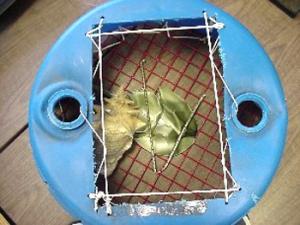Last week I wrote about conchs after fisheries police arrested a local waterman and charged him with taking undersized shellfish. Floating a few questions to the scientists and enforcement folks who work for the state brought information worth sharing and helped put the violations in perspective.
First off, in a world with a rapidly growing population, and all of those people wanting to eat, and shellfish being attractive to many, the demand for fresh conch meat is growing. That generally means higher prices paid to harvesters, and that generally means more watermen dredging and potting to get in on the strengthening market.
Consider this: In 2013, according to numbers provided by Delaware Fisheries Administrator John Clark, Delaware landings of conchs totaled 155,604 pounds. For the purposes of this fishery, conchs collectively means channeled conchs and knobbed whelks, both of which inhabit Delaware waters. That number in 2014 rocketed to 229,287 pounds.
Clark said that makes conchs Delaware’s third-most valuable fishery. “No. 1 is blue crab, by a huge amount ($4,364,065), followed by striped bass ($650,156), and then conch ($633,096). On a pounds-landed basis, it would be blue crabs first, followed by conch at No. 2. The bulk of conch landings come from Delaware Bay, but there are conch ocean landings also,” said Clark. (That explains why we see a lot more signs for crabs than we do for conchs! Remember, however, that conch meat for soups, salads and fritters is far more popular the farther south you go, especially in the Caribbean and farther afield, in the Asian markets.)
Many local conchers cultivate specific buyers in New York City who pay top dollar for fresh product. But don’t ask for any names. You’ll have as much luck as when you ask a successful fisherman the coordinates for his favorite fishing hole.
But in a small state with rapidly changing fortunes, it’s a volatile fishery too. In 2012, the total landings for conch were 28,765 pounds. “That was a huge year for blue crab landings, so much conch effort was directed toward crabs,” said Clark.
Clark said there is no daily limit for how many conchs can be landed but noted the season is closed between June 16 and Jan. 14. Delaware has 40 active conch-dredging licenses and 60 active conch-potting licenses. “There was a moratorium on new conch dredge licenses for several years, but the moratorium ended a few years ago,” said Clark. “The fishery had stabilized and there did not seem to be a need to continue the moratorium.”
Drilling down a little deeper
Now, about some of the pertinent biology and why taking undersized conch is illegal. Rich Wong, a marine biologist for Delaware, said it takes five years for a female knobbed whelk to grow to the minimum harvest size of five inches (from top to bottom). “Males, however, have slower growth, reach a smaller maximum size, and will take eight years to reach the legal minimum size (5 inches). We rarely observe any males reaching six inches in shell length,” said Wong.
So, based on increasing catches, slow growth rates and the number of licenses issued, is the conch fishery sustainable in Delaware waters? “We believe so, given the amount of fishing effort in Delaware over the most recent four or five years,” said Wong. “However, this species is highly vulnerable to overfishing because it reproduces so slowly. Increases in fishing effort could easily lead to a rapid and prolonged decline in the population. We are very mindful of that risk.”
Just in case you’re wondering what the conchs and whelks eat to grow themselves to market size, here’s another tidbit I found by drilling deeper into Wikipedia. Patricia B. Mitchell writes a food column and gets into the nitty gritty of what we eat. She writes that as pretty, graceful and placid as conchs look, they go about their business of eating aggressively. Those of you who are squeamish may want to skip this part of the column.
“The living Knobbed Whelk is a meat-eater. He hunts for shellfish like clams, oysters, mussels, etc. He ‘pulverizes’ a victim by hitting his heavy shell against the prey, then he wedges the edge of his shell between the bivalve halves, and pries the shell apart. Next he inserts his spoutlike proboscis into the bivalve and sucks out the soft parts.” Somehow it reminds me of that Vincent Price horror movie called “The Thing.”
As my father used to say, maybe you found out more than you really wanted to know about conchs.






















































